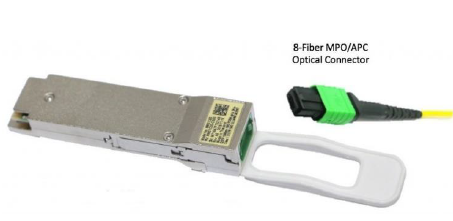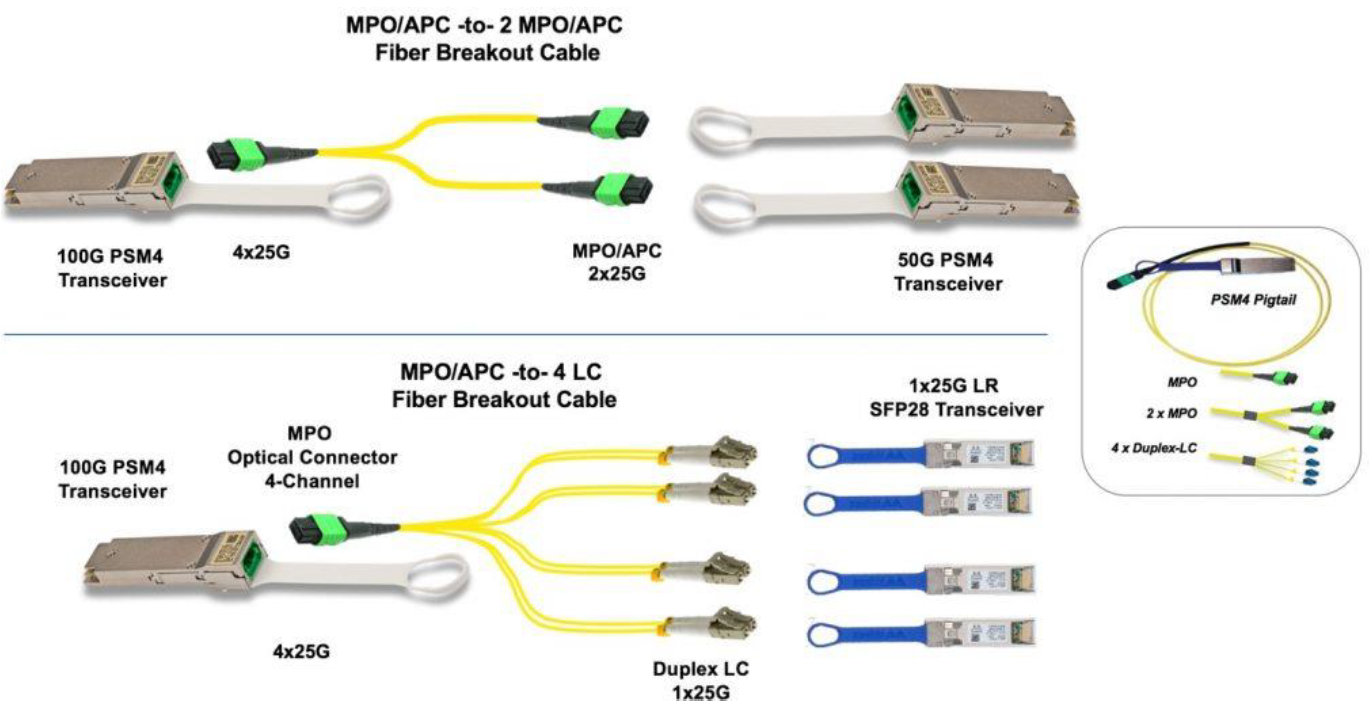100G PSM4 transceiver information

The PSM4 transceiver is the lowest priced 100Gb/s transceiver on the market. The transceiver can use single-mode fiber for long reaches of up to 2 km. The best use case is at reaches less than 500 meters. When tallying up the cost of longer reaches, the cost of the eight fibers adds up for each meter. The CWDM4, using two fibers, becomes more economical.
The 9-µm single-mode fiber is hard to build and align transceiver components with, and requires expensive alignment equipment. Therefore, single-mode transceivers have always been more expensive than multimode transceivers. Multimode transceivers are less expensive than single-mode transceivers, and it is exactly the reverse for the fibers.
Bus 100Gb/s point-to-point over 2 km.
Be broken out into dual 50Gb/s or quad 25Gb/s links for linking to servers, storage, and other subsystems.
Additionally, the breakouts can be made using passive fiber splitter cables or a transceiver/AOC hybrid called a pigtail.

The MPO used in the SR4 multi-mode MPO (aqua-colored) is not the same as the MPO/APC (green- or yellow-colored) for the PSM4. Optical connectors pass through most of the light. Some of the light gets reflected back towards the laser from the inside surface of the fiber end in the connector. The PSM4 transceiver uses tiny core single-mode fiber. It concentrates any back reflections in the connector infrastructure and aims it back at the laser, which can destroy it. The single-mode fiber infrastructure polishes the fiber ends at an angle to divert the back reflections away from the laser. Hence, the name Angle Polished Connector (APC). Multi-mode fiber has a significant 50-µm core and the large area disperses the back reflections, making it less of a problem. In reality, the MPO connectors use 12 fibers, with four left unused.